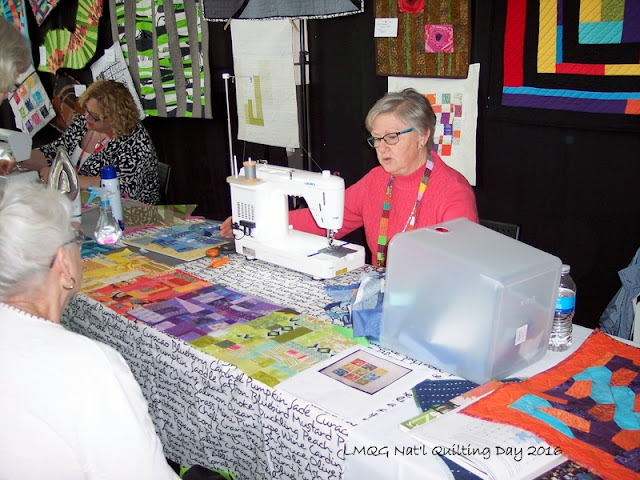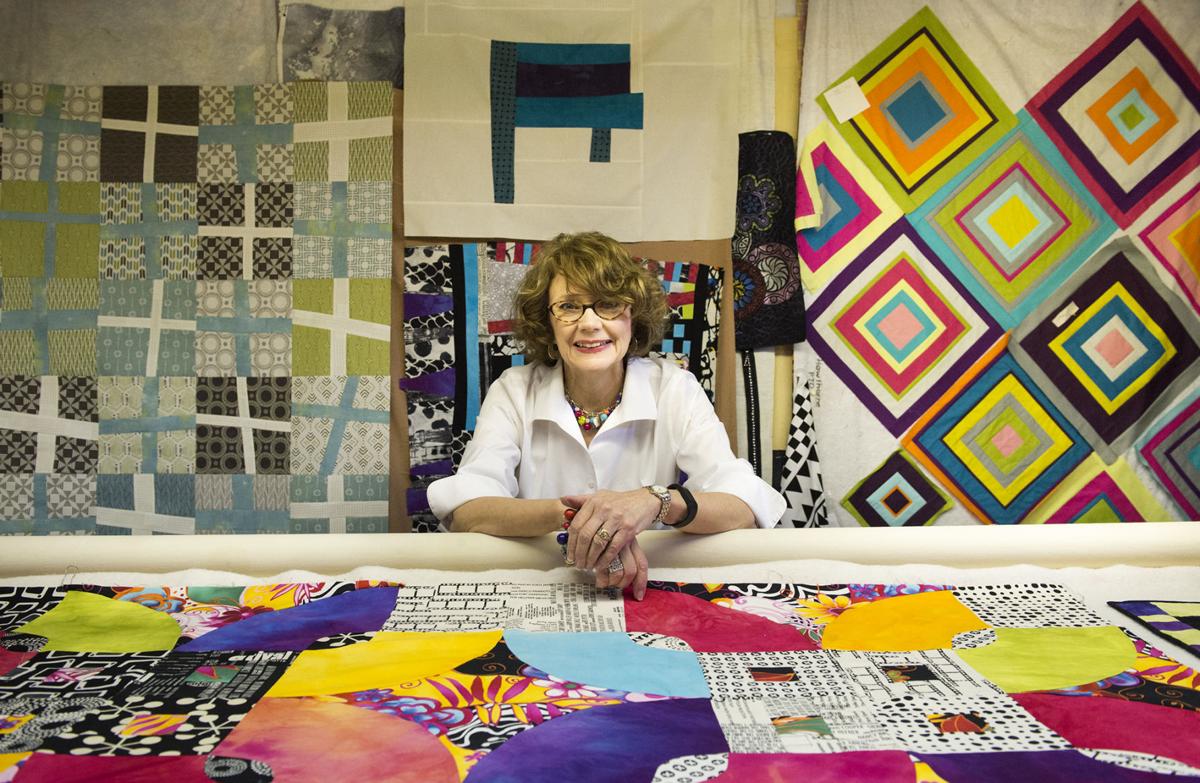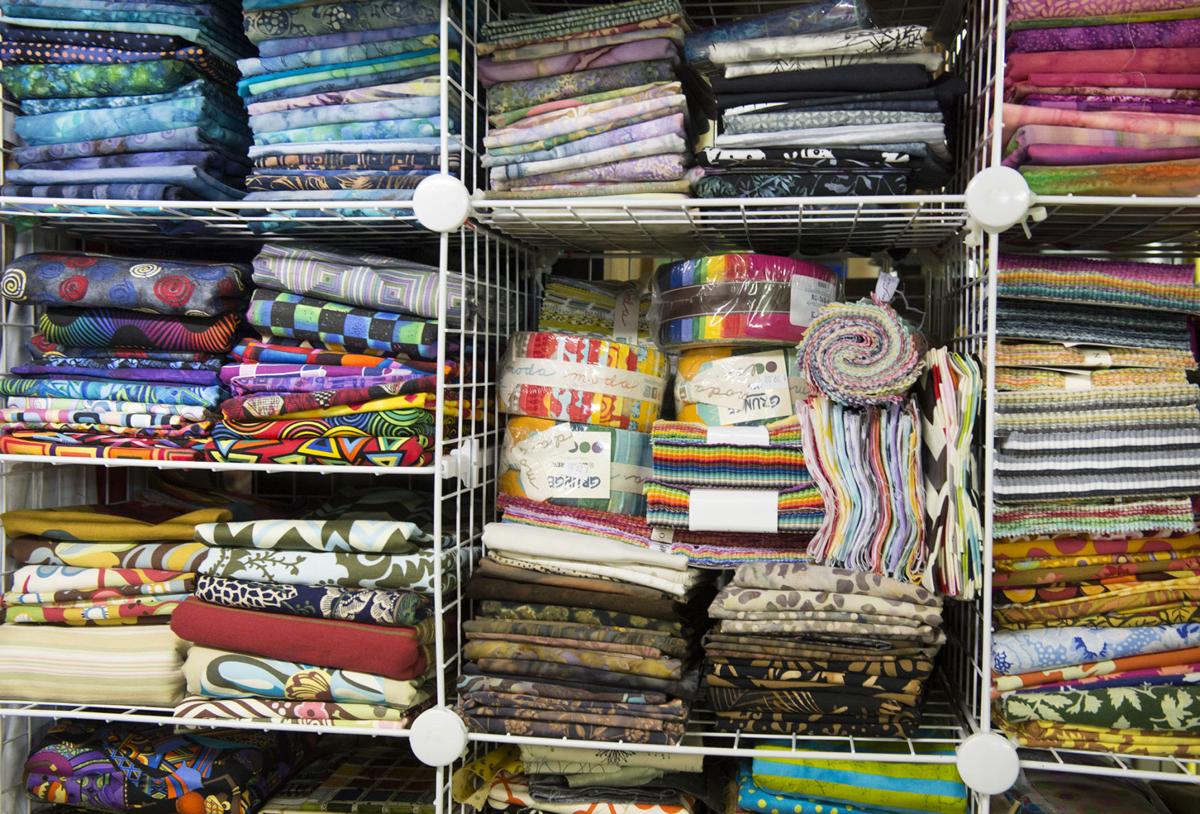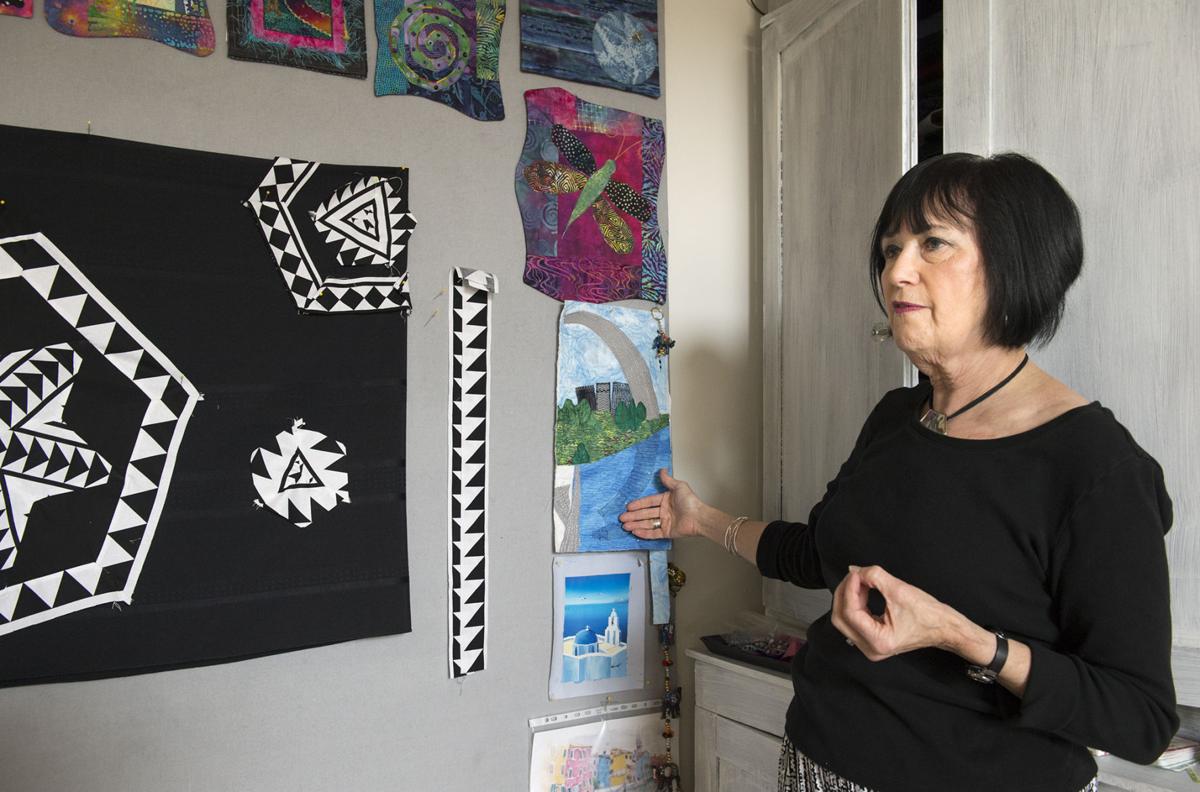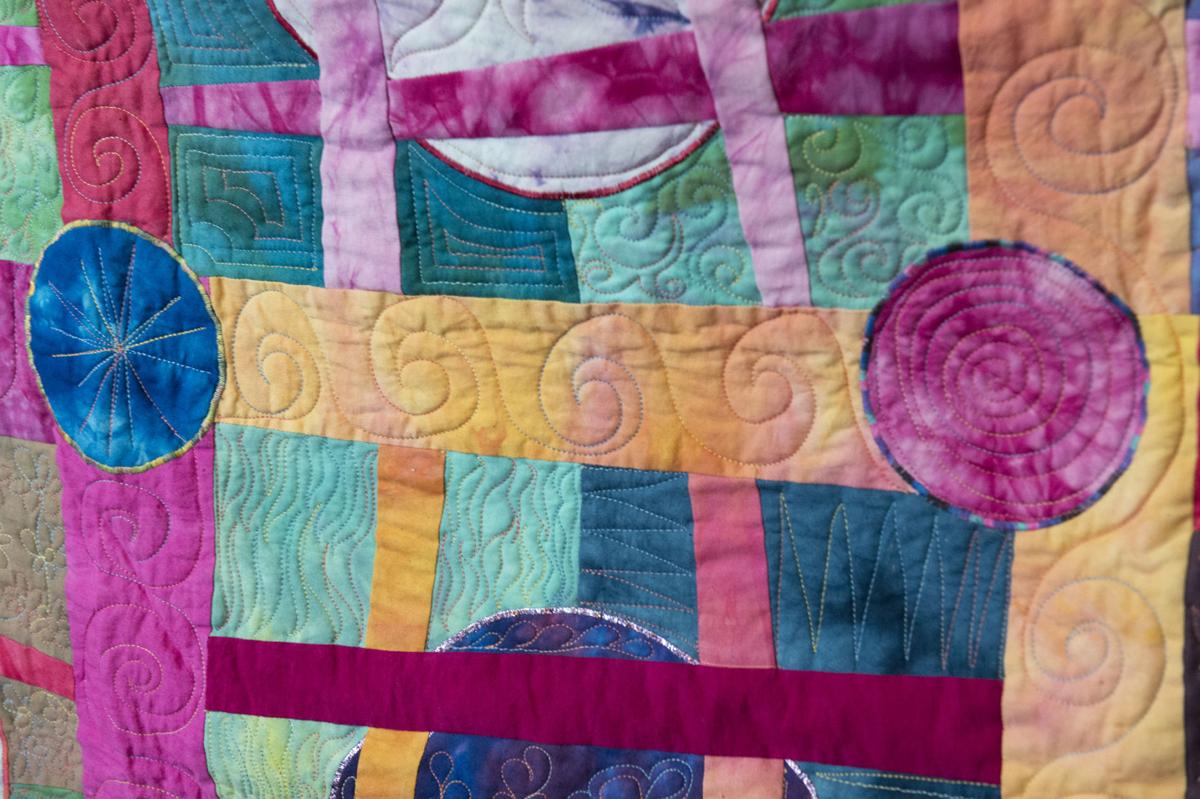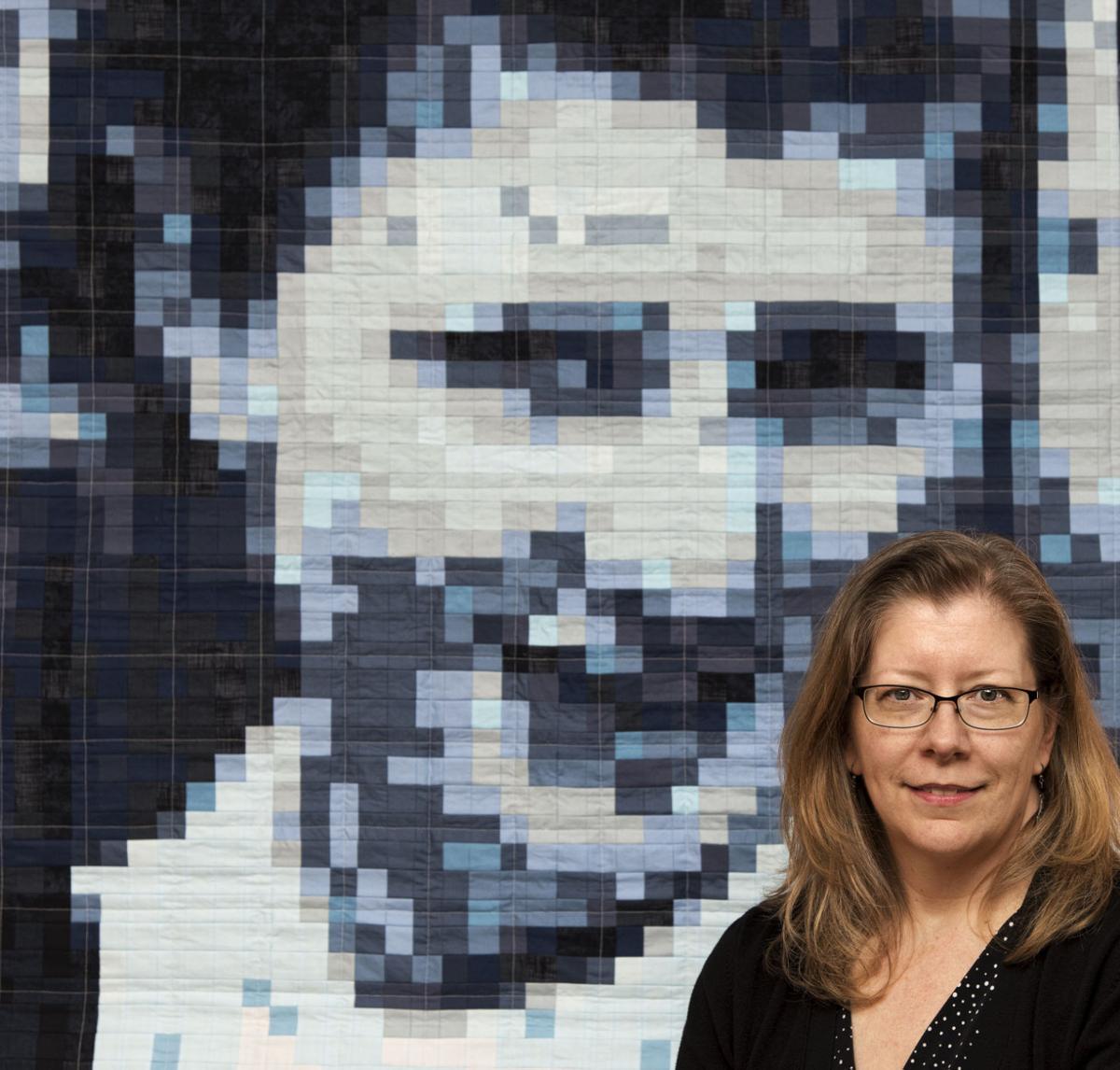And, if that
explanation leaves you a bit fuzzy -- consider another modern quilt
guild definition: “Modern quilting is like porn -- hard to define, but
you know it when you see it.”
A brief history of quilting
Quilting
dates back to the 35th century B.C., according to a timeline published
by the International Quilt Study Center at the University of
Nebraska-Lincoln. The earliest surviving quilted object -- a linen
carpet -- was found in a first century B.C. or second century A.D.
Mongolian cave tomb. In the late 1500s, knights wore quilts under their
armor for protection, said Green, a longtime quilter, quilt educator and
docent with the Quilt Study Center.
“Quilting crosses cultures and crosses timelines,” she said.
It
is a common thread in the fabric of nearly all human history. It tells
the stories of people who lived long before us and carries them forward
to the generations yet to come.
Which
is why Green is so passionate about preserving, continuing and
appreciating the quilt culture through her Discover Nebraska quilting
program for fourth-graders.

Sheila Green with her quilts in progress and inspiration pieces.
(Photo by Gwyneth Roberts/Journal Star)
She
belongs to three local quilting groups as well as national
organizations. Just last month, she spent four days in Pasadena, Calif.,
at QuiltCon -- the third international quilting conference hosted by
the Modern Quilters Guild.
Modern quilting might provide just the momentum needed to give the age-old tradition a contemporary boost, Green said.
Although
aspects of modern quilting can be found as early as the 1970s, the idea
of this break-the-rules quilting didn’t gain a foothold until 1998,
when Martha Stewart Living magazine published a photograph of a quilt
created by Denyse Schmidt.
Schmidt called her quilts “chic, modernist aesthetic.”
In
the remote Alabama community of Gee’s Bend, a group of African-American
quilters became known for their Gee’s Bend quilts -- made of
re-purposed clothes, crudely cut fabric remnants and feed sacks, all
pieced together in free-flowing individual artistry. Their work is
revered much like the artistic works of Picasso, Matisse and Jackson
Pollock, but it is their philosophy of do what makes you happy, rather
that follow a specific pattern or format that struck a chord with the
modern movement.
Enter
the era of affordable digital cameras, Facebook, Flickr, Pinterest and
Instagram -- the modern quilt idea took off faster than a sewing machine
needle at full throttle.
Today there are more than 100 modern quilt guilds worldwide, with more than 100,000 members, Green said.
Nebraska nice

(Photo by Gwyneth Roberts/Journal Star)
The No. 1 rule in the Lincoln Modern Quilt Guild is: Be nice.
Every creation is a take on personal expression, Jarchow said.
Dittenber’s quilting often is more art than cozy cover. Truly, it has unleashed a creative side that surprises even her.
But
it has dismayed the “quilt police” -- traditionalists who struggle with
non-uniform pieces, crooked edges, colorful threads and freehand
quilting motifs with unevenly spaced stitches and looping lines.
“I don’t use a ruler," Dittenber said. "I cut, slash and put the fabric in the machine. It’s really freeing."
She
doesn’t use patterns -- never has. Instead she creates the looks she
desires simply by replicating what she sees in pictures, and letting her
spirit carry her forward.
Not
everyone is impressed with her work -- as she discovered in 2005 when
her one and only entry to the Nebraska State Fair yielded stinging
criticism.
“I got a
ribbon,” Dittenber said. But the critique said her squares “should be
squared off.” The judges missed the entire point of her modern piece.
Stories like that sadden Jarchow -- who cannot begin to contain her enthusiasm for the modern quilting movement.
The youngest of 10 children, Jarchow learned to sew at the age of 6. Sewing was an economic necessity, she said.
“I
did not have a store-bought dress until the mid-1980s when I moved to
Lincoln and was a bridesmaid in a wedding,” Jarchow said.
She
made her first quilt in high school -- learning at the side of her
mother, Caroline Mueller. Quilting by hand, they stitched together a
mother/daughter bond. Together they cut, pieced and quilted more quilts
than they could gift to family and friends. So they donated their quilts
to Project Linus, a Colorado-based charity that provides handmade
blankets and quilts to traumatized and sick children.
“She made hundreds of small crib quilts,” Jarchow said. “Her love was fully in quilting.”
Even
as she got older, Mueller kept quilting. But Jarchow, fearing what lie
ahead, held on to the quilts, rather than donate them. And just like her
mother, she held on to every scrap -- knowing one day she would find
the perfect use for it.

Kristie Jarchow created this pixelated quilt she calls "So Blue" in memory of her mother,
Caroline Mueller.
(Photo by Ted Kirk/Journal Star)
Mueller
died in the fall of 2012, just before her 94th birthday. Overcome by
grief, Jarchow quit quilting for a time. Then she discovered Quilts for
Kids, a Pennsylvania based nonprofit that provided quilting kits, with
the pieces already cut, to quilters who loved to sew. Finished quilts
were then returned to Quilts for Kids which donated them to hospitalized
children.
Quilts for Kids eased her back into quilting.
Once started, Jarchow found she could not stop.
“Now I have a need to quilt and carry on in her memory,” Jarchow said of her mother.
The camaraderie of sewing

(Photo by Gwyneth Roberts/Journal Star)
Like
Mueller and Jarchow, many quilters quilt for the love of it -- and the
camaraderie of sewing together. They give their creations away as gifts
for babies, birthdays, graduations and weddings. They donate quilts to
Habitat for Humanity, Quilts for Kids in Nebraska and other
organizations helping those in need.
They
quilt for fun. Gathering together for “sew days” at the quilt museum, a
quilt shop or one another's homes. They quilt for contests and
challenges -- practicing angles, closure, negative space, improvisation,
finding use for “a wrong color,” or shedding light on a social issue.
They hold round robins and mystery quilt-alongs.
They quilt for creativity, healing, emotional satisfaction and for love.
“I find it cathartic to make things happen,” Jarchow said. “I’m trying to carry on what my mom would do.”
Social
media fuels the fire -- offering a plethora of ideas, causes and
conversations. Jarchow blogs. She posts pictures on Pinterest and
Instagram, and discovered the works of others -- some even in her own
neighborhood. She visits countless quilting sites, each offering
patterns, tutorials and “challenges” to which continues to expand her
community of quilters.
“Modern quilting is really a movement,” Jarchow said.
“We want to blanket the world in quilts.”
Reach the writer at 402-473-7217 or eandersen@journalstar.com. On Twitter @LJSerinandersen.

















